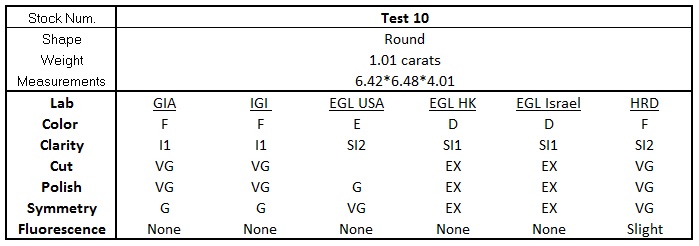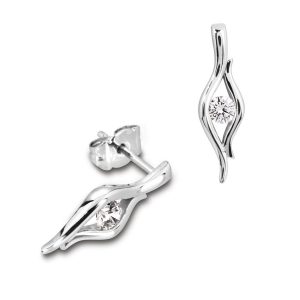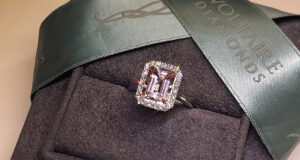A diamond grading report, now commonly referred to as a certificate, is your guide to a stone’s grading. This documentation not only provides invaluable insights into your diamond’s quality but also ensures that your purchase is free from bias.
There are plenty of diamonds in the world that are uncertified, however as the years have gone on, certs have become more common in the diamond industry. At Voltaire we stock both, and believe it is up to simple preference on what you decide to buy.
Like most things, diamonds are a nuanced purchase. Yes, as you go down in specification, it will lose clarity and gain colour. That however, might not mean you don’t love it. A diamond is a life long purchase, but at Voltaire we believe at the end of the day it is your purchase, and therefore you have the right to understand what a certificate states and how to understand it.


WHo GRades Diamond and Gemstones?
There are many grading laboratories all over the world, however the most well known are the International Gemilogical Institue (IGI) and the Gemstone Institue of America (GIA). These are seen by professionals and purchasers a like as the two most reputable labs, due to stricter grading criteria.
In a report by Rapnet, located here, they assessed the grading laboratories standards by having them all grade the same stones. GIA and IGI had nearly the exact same grade for each stone, while the other labs tested had varying results. GIA was ruled as the lab with the strictest guidelines, which caused a higher price point.
Essentially, the grading of stones can vary wildly.
All Rights Reserved: Rapnet 2013
The table linked showcases the differences.
However, it is always important to remember that you are purchasing a diamond and not a certificate. At Voltaire Diamonds we encourage our clients to choose their stone based on what they want. Price plays just as much a part as specifications, and we find that while certificates play a vital part in providing an unbiased opinion, ultimately the stone you have in your hand is the deciding factor.
What does a diamond certificate look like?
Diamond certs do not vary too much besides the aesthetics. We have included a selection of examples of online certifications. Diamond certs are a one of a kind document, however most reputable grading labs allow you to access versions of the certificates online.
Something to note is that GIA has begun to shift all their certificates to online copies, to reduce their paper waste.
In this blog we will mainly be focusing on the specification section of a cert. This is to ensure the readability of certificates to everyone, so an informed purchase can be made!
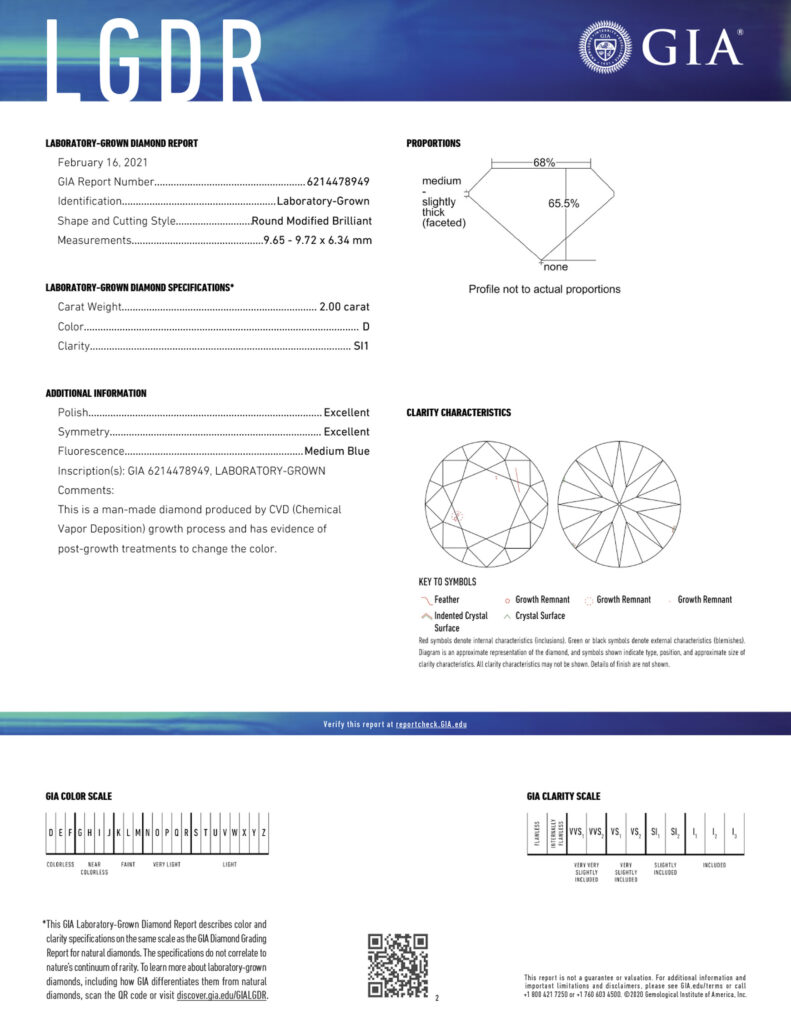
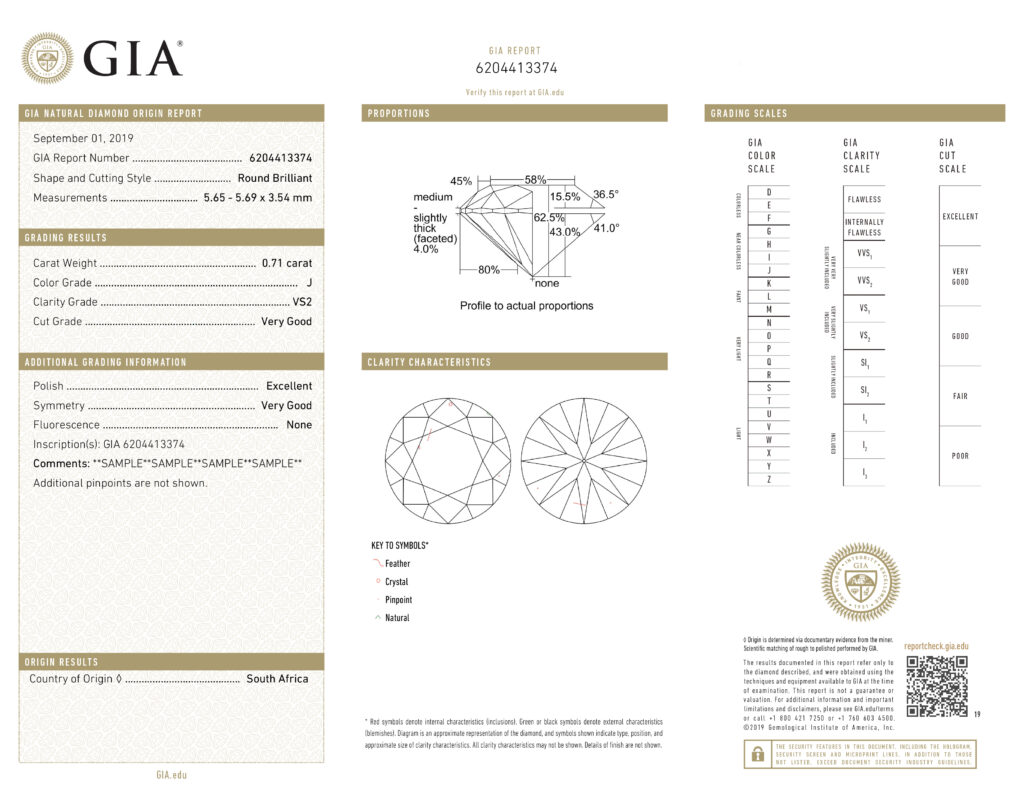
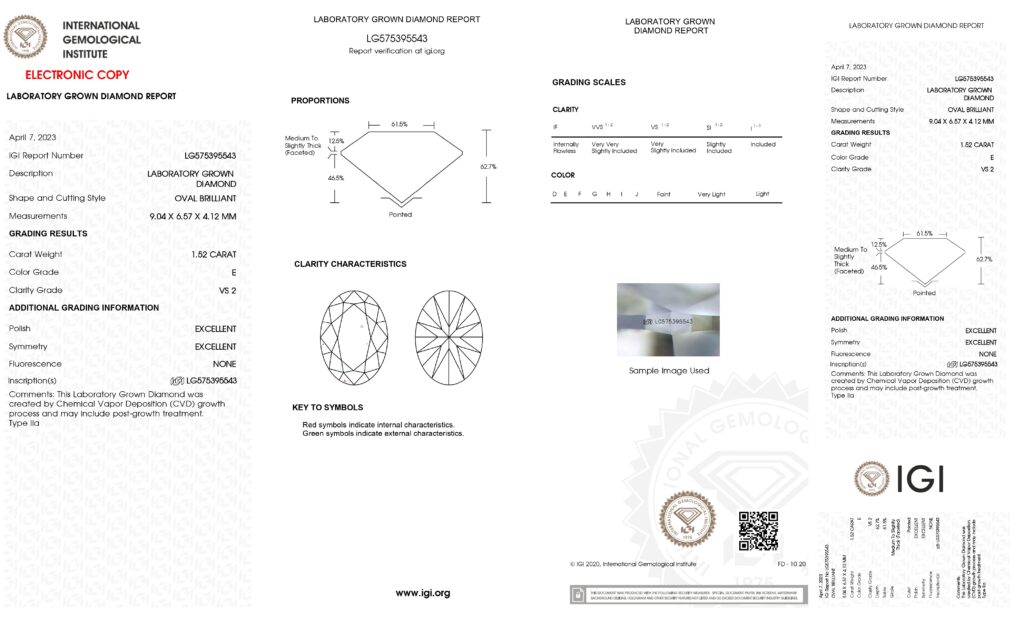
How do i identify my diamond?
In this blog we have compiled three different certificate types – a PDF version of a printed GIA stone, the online Lab-Grown GIA cert and an online version of an IGI stone. These are to highlight the differences, but also the similarities. Most diamond certificates will be near identical to these in some ways.
Each diamond grading report is assigned a unique report number, which corresponds to the specific diamond being evaluated. Most often, this report number will be engraved onto the diamond itself, and will be able to be viewed with a ‘loop’ magnifier.
The report number of a stone will more than likely be found at the very beginning on the certificate. The following information is all to do with the specifications of the diamond in question – how big is it? What does it look like? What are it’s flaws?

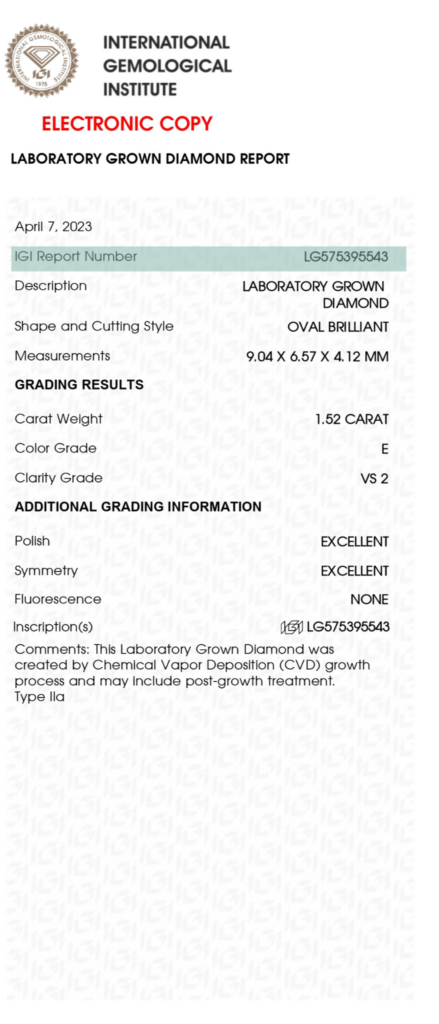
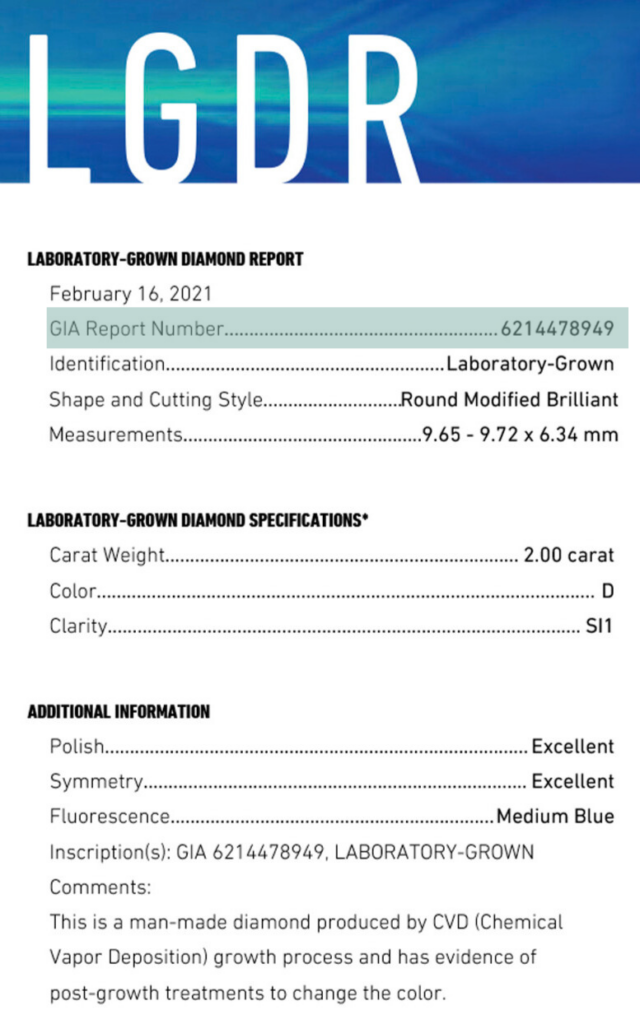
What shape is my stone?
Your cert will list the diamond’s shape and cutting style. This is a good way to immediately identify if your cert is the correct one for your stone. A round brilliant is not a oval and so on and so forth. Something to note is that some cuts of diamonds will not be listed as their most well known name.
For example, a Radiant cut is often seen as a ‘Cut-Cornered Rectangular Modified Brilliant’, which is extremely wordy and why it is not known as such! Another example of this is an Asscher cut, which is often seen on certs as ‘Square Cut Emerald’ due to a long history of patents and other complicated things.
These discrepancies are not to be worried about, and putting research into cut variants can give you peace of mind. At Voltaire, our consultants are knowledgeable about these differences, and would be happy to guide you through all the tricky information.
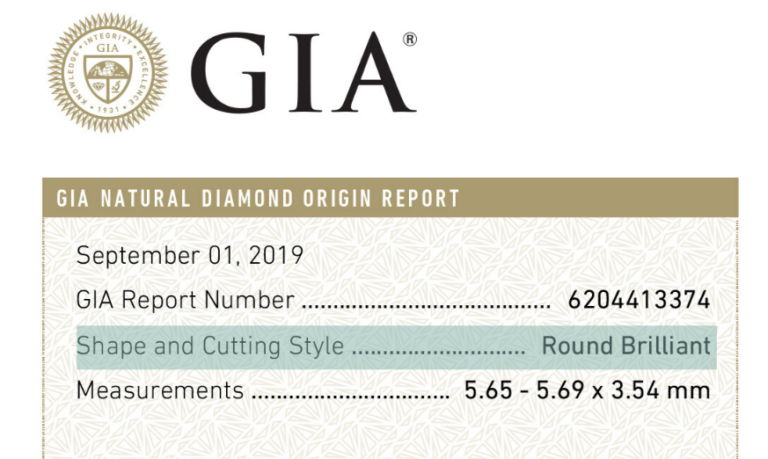
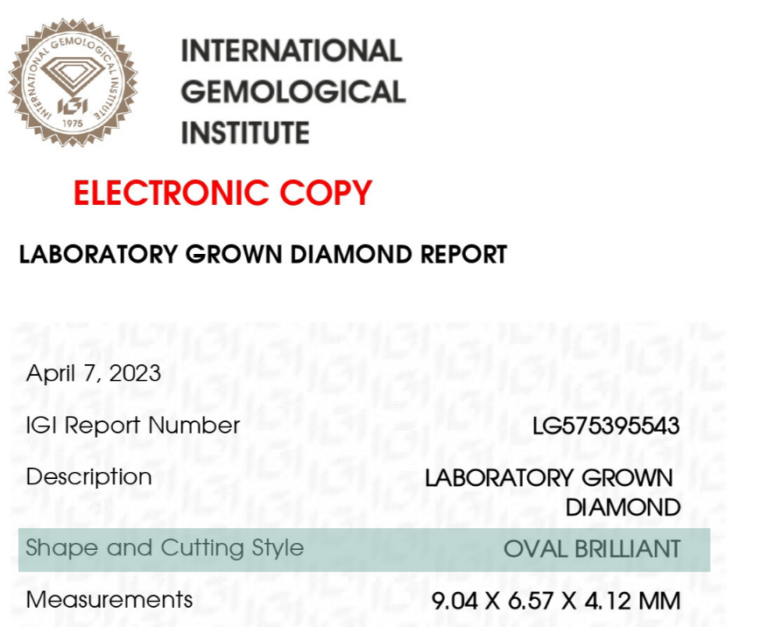
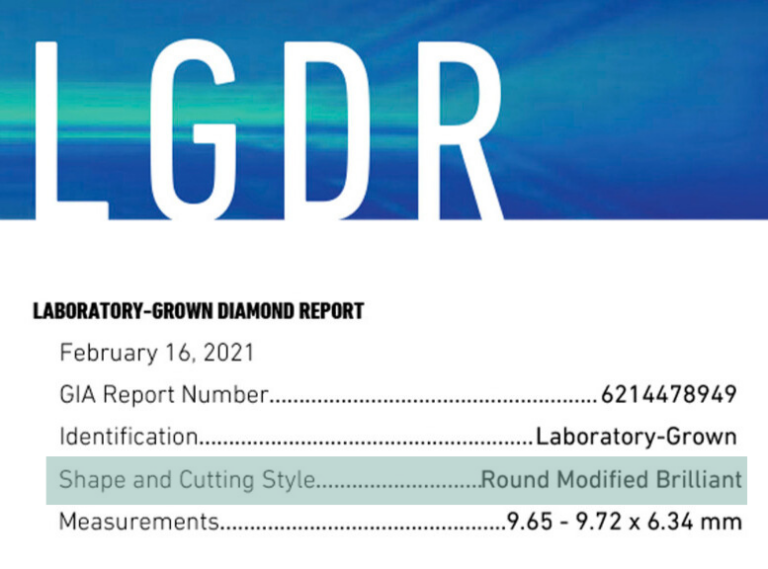
What are specifiations?
The specifications of a diamond encompass various key elements that define its quality and appearance.
These include the 4Cs—cut, color, clarity, and carat weight. If you’ve even looked a little into the world of diamonds you’ll know this term!
A cut grade for a diamond will only be relevant for a Round Brilliant, as no other diamond shape is graded. We would highly recommend the guide to the 4 C’s by GIA, found here, as they are the inventor of this standardised grading.
- Cut: Describes the diamond’s shape, proportions, and the quality of its facets. A well-cut diamond reflects light and gives the classic diamond ‘sparkle’ and fire we all know and love. For more informaiton look here.
- Colour: Grades the absence of color in the stone, from colorless (D) to light yellow or brown (Z). In natural diamonds, you will see colours on both ends of the spectrum. Labs however, are man-made, and as most people only want higher spec. , tend to be limited to D-G. This creates an odd phenomenon where dropping spec. can see the price staying the same, or even an increase, as they are less popular.
- Clarity: Evaluates the presence of imperfections, or inclusions, within the diamond. Grades range from Flawless (no inclusions) to Included (visible inclusions). Flawless diamonds are extremely rare, and professionals tend to rate diamonds on whether they are ‘eye-clean’, rather than flawless.
- Carat Weight: Measures the diamond’s mass, with one carat equaling 200 milligrams. Sometimes you will encounter a diamond that looks a lot bigger than a stone with a higher carat weight. This is due to the diamonds spread, and is something to keep an eye on.
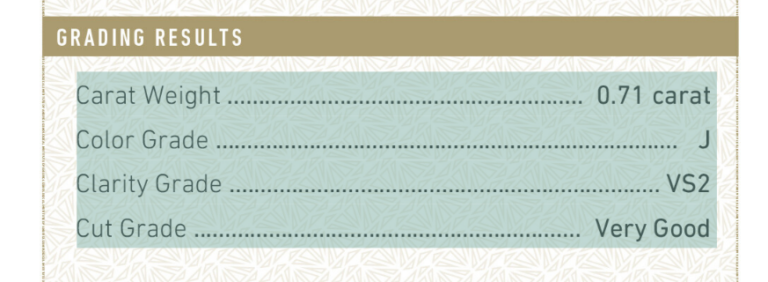


Additionally, specifications cover details like the diamond’s measurements, polish, symmetry and fluorescence.
- Measurements: Details the diamond’s length, width, and depth, which ensure its proportion aligns with its carat weight. Measurements will be found with the cut shape of the diamond on a cert. There are formulas to assess what the ‘good’ ratio of a diamond is, and our consultants can guide you on this as well.
- Polish and Symmetry: Describes the quality of the diamond’s surface finish and the precision of its cut. Basically, how well the diamond has been cut. Are the cuts neat? Are they messy?
- Fluorescence: Measures the diamond’s reaction to ultraviolet light, often graded from none to very strong, usually blue but occasionally other colors. Fluorescence is only a ‘concern’ in natural diamonds – a diamond gains fluorensence from the minerals around it as it is formed. Labs are made in a lab, and therefore it is highly unlikely they will develop a natural found difference. A great article on fluorescence can be found here.
- Inscriptions: Micro-laser inscriptions for identification and additional details not plotted in the reference diagram.
Often included can be comments, as seen above in the full certificate, and inclusions are also listed on a cert.

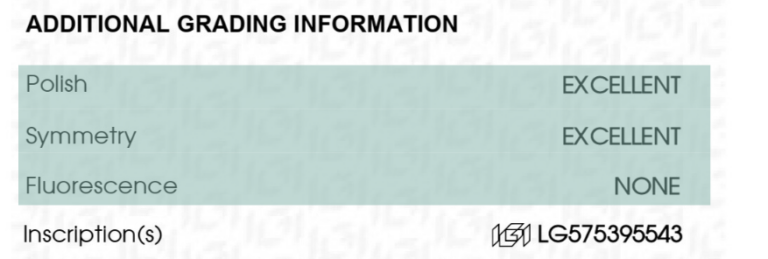

So, Why do certs matter?
Understanding how to read a diamond grading report empowers you as a consumer. However, having the highest spec isn’t everything. Diamonds vary wildly, and the choice at the end of the day, is in the hands of you, the buyer.
As shown above, the grading of a diamond is complicated, but not so much that you can’t understand. Like anything in sales, you are being sold a product. There are market values and trends going on that you may not be aware of, and sellers that will pull the wool over your eyes to make a profit.
At Voltaire we believe in our customers making informed purchase decisions. An F colour diamond might look ‘better’ than an E – because it might have a better cut, or polish or a variety of reasons.
Many people get caught on wanting the highest specifications, on having that D VVS1 and not wanting to view anything else. We encourage you to buy what you want, but to look at all of your options. The ‘perfect’ diamond is the one that is within budget, suits you, and is something that you love.
There is nothing wrong with going for a diamond that doesn’t have the highest colour or clarity – as long as you love it.
Certificates allow you to understand and value the purchase you are making, but the physical diamond is what you should be buying.
Diamond Ratio
By Emma Neary When shopping for the perfect diamond, researching the...
What you need to know about diamond certification
Now widely referred to as a diamond grading report, a certificate...
Anatomy of a Round Brilliant Cut Diamond
Round brilliant cut diamonds are famed as the King of the...
Choosing your diamond – the difference between popular diamond shapes and how to choose the one that’s right for you!
Do you know your princess cuts from your emeralds? How about...
By Lauren Fagan






